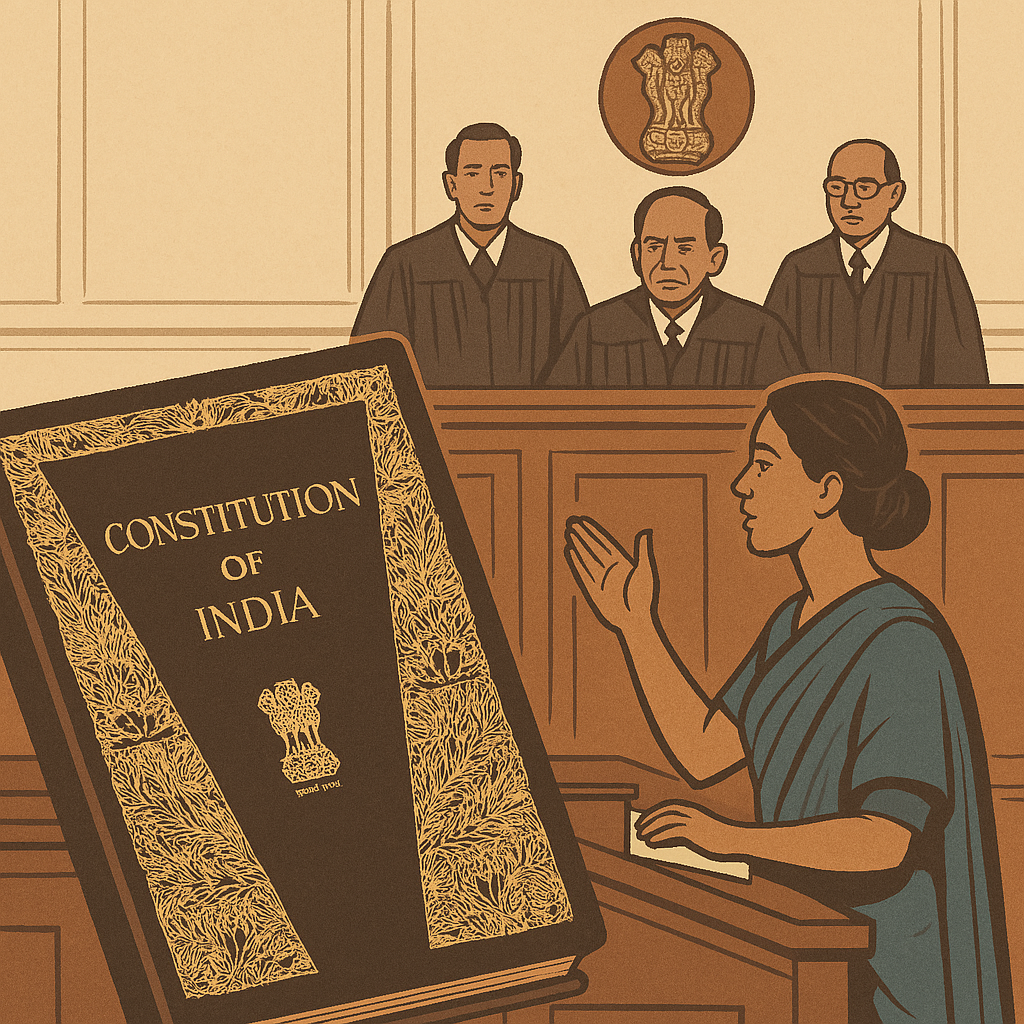The Doctrine of Separation of Powers ensures that the Legislature, Executive, and Judiciary function independently and keep each other in check, forming the backbone of a democratic and accountable government.
📚 Introduction
Imagine a cricket match where the players, umpires, and commentators are all the same people. Sounds chaotic, right?
That’s why democracies like India rely on a principle called the Doctrine of Separation of Powers—so that no branch of the government becomes too powerful. Instead, the power to make laws, enforce them, and interpret them is divided among three organs:
-
Legislature – Makes laws (Parliament)
-
Executive – Implements laws (Government)
-
Judiciary – Interprets laws (Courts)
This separation is crucial to maintain checks and balances and to prevent abuse of power.
📜 Historical Background
The idea was developed by Montesquieu, a French political philosopher, in his famous work “The Spirit of Laws”(1748). He believed that concentrating power in one hand leads to tyranny, and liberty can be preserved only by dividing government power.
Modern democracies including India, the USA, and the UK have adopted this concept—though with variations.
🇮🇳 Separation of Powers in the Indian Constitution
Unlike the U.S. Constitution, India does not explicitly mention “separation of powers”, but the idea is inherent in the Constitution’s design.
Key provisions that reflect this separation:
-
Article 50 – Directs the State to separate the judiciary from the executive (Directive Principle)
-
Articles 121 & 211 – Bar discussion on judges’ conduct in Parliament or State Assemblies
-
Articles 122 & 212 – Courts can’t question legislative proceedings
-
Judicial Review – Allows judiciary to strike down unconstitutional actions by the legislature or executive
🔁 How the Three Organs Work Together – But Separately
| Branch | Role | Example |
|---|---|---|
| Legislature | Makes laws | Parliament passes bills like GST Act |
| Executive | Implements laws | PM and Cabinet ensure laws are enforced |
| Judiciary | Interprets laws | Supreme Court hears challenges to new laws |
While they are independent, there is some overlap, which makes India’s version a “functional” separation, not an absolute one.
⚖️ Landmark Cases on Separation of Powers
-
Kesavananda Bharati v. State of Kerala (1973)
– Recognized separation of powers as part of the Basic Structure Doctrine. -
Indira Nehru Gandhi v. Raj Narain (1975)
– Held that election-related judicial review cannot be eliminated by Parliament. -
State of Bihar v. Bal Mukund Shah (2000)
– Warned against judicial overreach into legislative/executive domains. -
Raj Narain Singh v. Chairman, Patna Administration (1954)
– Clarified limits of executive discretion under legislative framework.
🧠 Why It Matters
-
🛑 Prevents dictatorship – No one branch can become all-powerful.
-
⚖️ Maintains rule of law – Powers are bound by constitutional limits.
-
✅ Promotes accountability – Each organ is answerable in its own sphere.
❗ Challenges in Practice
In India, there have been instances of overreach or encroachment:
-
Judicial activism (courts directing policies or governance)
-
Ordinances by executive bypassing Parliament
-
Legislative interference in judicial matters (post-judgment amendments)
But such tensions are part of a healthy democracy, provided each organ respects the spirit of constitutional balance.

